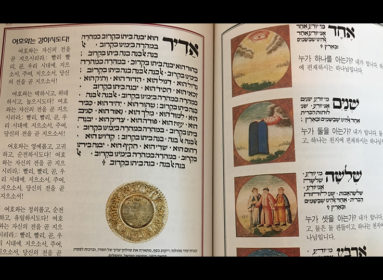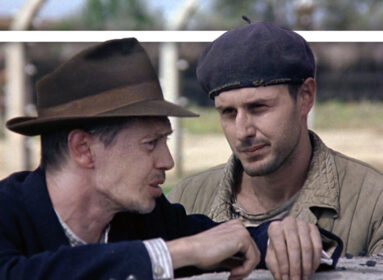
By Cindy Mindell
In 2009, a small group of Jewish leaders and philanthropists launched a new and innovative Jewish-engagement program. Piloted in the Greater Hartford community, Chai Mitzvah was first conceived a year prior by Jewish businessman and philanthropist Scott Shay in his acclaimed 2006 book, Getting Our Groove Back: How to Energize American Jewry.
Shay, a resident of New York City, had contacted Audrey Lichter, a seasoned Jewish educator from West Hartford, and asked her to put together a program designed to eventually go national. Lichter calls what followed “an amazing journey.”
Today, she still serves as executive director of Chai Mitzvah. Shay is founding president of the program’s board of directors.
Fast forward seven years, four countries, and 1,500 participants. Chai Mitzvah has just announced launch of a new pilot initiative, made possible with the help of a two-year grant from the Jewish Community Foundation of Greater Hartford, and in partnership with the Jewish Federation of Greater Hartford, the Mandell JCC, and area synagogues and Jewish day schools. Dubbed “Ignite Hartford,” the new initiative takes a community-wide approach to Chai Mitzvah, enlisting more than 25 groups who will start the program in fall 2016. The project will kick off on Wednesday, Sept. 21 at the Mandell JCC in West Hartford.
An unaffiliated, independent non-profit corporation funded through donations and grants, Chai Mitzvah is still guided by its original mission: to increase engagement throughout the Jewish community. The Chai Mitzvah program is run within congregations and Jewish organizations, as well as in informal, book club-style groups. Over the nine-month curriculum, each participant attends a monthly group study session.
In addition, says Lichter, “what makes Chai Mitzvah unique is what we call the ‘Jewish bucket list.’ We ask people to identify what’s important to them in the area of something Jewish that they want to learn, a ritual to take on or deepen, and a social-action project to engage in. So, as they’re coming together for the nine sessions in this group opportunity, they’re also growing individually because they’ve set their personal goals of what’s important to them.”
The program is most prevalent in North America, with 70 groups up and running. In 2011, former West Hartford resident Yosefa Drescher, who lives today in her native Israel, “exported” Chai Mitzvah to the Jewish state in the form of Masa Chai. Drescher still leads the program, engaging a range of participants – new immigrants, IDF soldiers, kibbutzniks, and Arab and Jewish neighbors. A group met in San Jose, Costa Rica two years ago, and Lichter is working with the Jewish Theological Seminary in Buenos Aires to translate the Chai Mitzvah materials into Spanish and Portuguese.
“There’s so much talk about the decentralization of Jewish life, and about people wanting to do Judaism in different ways,” Lichter says. “Although we’re still a big believer in congregational life, we know that many people find their Jewish connection in different ways. The reason this program makes sense at this time is that it speaks to that flexibility and that ability to have a meaningful Jewish experience with friends that’s a little less centralized, a little more informal. Chai Mitzvah is a bit like tofu: there’s the basic program and it can be flavored where your affiliations and passions lie.”
Chai Mitzvah connects participants to the resources and opportunities that already exist in most Jewish communities. “In a business model, the issue is not one of supply but is one of demand,” Lichter says. “So our mission is to increase demand for the supply that’s out there.”
Each Chai Mitzvah group is supplied with a text- and discussion-based sourcebook, containing topics of interest such as one’s relationship to family and community, money and tzedakah, cultivating gratitude, living with mindfulness, Israel, Judaism and the environment, and Jewish rites of passage. While some groups choose to have a member of the clergy or other Jewish professional as a facilitator, the Chai Mitzvah curriculum is designed to be self-led. All groups follow the same curriculum simultaneously – in October, they’re talking about Jewish rites of passage and in November, they’re discussing tzedakah and philanthropy – but each group may be doing so from a specific perspective.
At the end of the nine sessions, each participant is acknowledged at a “graduation” ceremony with a certificate of completion and a Jewish National Fund tree certificate.
Graduates are then encouraged to maintain their involvement in the Jewish community, via the “What’s Next” portal on the Chai Mitzvah website.
“Part of our mission is to publicize and be a clearinghouse for all the opportunities for Jewish adult engagement nationally and internationally,” Lichter says. “There are a lot of things out there; all kinds of ways for people to continue learning and doing Jewish.”
Ignite Hartford is another way to strengthen engagement on a community-wide basis, rather than recruiting participant groups one by one. After its pilot run in Greater Hartford, the model will be exported to several other U.S. communities in 2017.
In addition to the generous grant the Jewish Community Foundation of Greater Hartford is now providing to help launch Ignite Hartford, the Foundation was an early funder of the Chai Mitzvah program introduced in 2009. Foundation president and CEO Michael Johnston explained why the organization felt it was important to step up to the plate a second time.
“The program has evolved quite significantly over the years,” says JCF President and CEO Michael Johnston. “We see Chai Mitzvah as a very interesting and powerful vehicle for engaging members of the Jewish community in their Jewish identity in lots of different ways – not only for individuals, but also through interesting opportunities for collaboration and participation of Jewish organizations. Past and current participants have told us that Chai Mitzvah is a very powerful opportunity for them to understand their faith better, and for them to share and participate in learning with other individuals makes it even more meaningful. In this most recent iteration, the entire community can participate together, all studying the same kinds of things on the same schedule. Bringing them closer to their identity, offering ways for them to find meaning in their own Jewish identity – this is the kind of thing that the Foundation likes to do. Finding opportunities to create vehicles for engagement for our community is a really powerful part of our purpose and our mission.”
In addition to starting small, Chai Mitzvah’s staying power stems from a commitment to the long haul and a willingness to learn from what doesn’t work.
“When it comes to Jewish education, if you do something without a 10-year vision, it’s better, in my view, not to do it,” says Shay. “It’s impossible to have the foresight to see how things are going to play out. One thing I’ve learned in business, as well as in my Jewish communal life and in my personal life, is that people overestimate what they can accomplish in the short term but grossly underestimate what they can accomplish in the long term if they stick with it.”
There have been a few bumps along the road, according to Lichter, but no flat tires. Specifically, the original concept of Chai Mitzvah was to encourage Jews to revisit and recommit to Jewish life every 18 years after bar-/bat-mitzvah age — 31, 49, 67, and 85. During its pilot year, the program was embraced by all of Greater Hartford’s Jewish congregations, with participants guided by local educators and mentors and a year-long curriculum based on the Jewish calendar.
But after two years using the same synagogue-based model in several communities, feedback led Chai Mitzvah organizers to revise their model.
“The rabbis were saying that the ages were a problem; they were turning people away who wanted to participate but who had to wait. It was very difficult for the rabbis to do that because they never like to turn people away,” Lichter says. “These days, it’s not so much about chronological ages: at 50, you could have a child in kindergarten or be an empty-nester. So, we abandoned that model after a couple of years. What we’ve learned is that Chai Mitzvah is all about the cohort group that comes together: the participants need to feel comfortable with each other. It’s like a book group, where people trust each other, listen to each other, and encourage each other to think about how they feel personally about the book.”
As a result, the program was opened to anyone at any age, and offered not only through synagogues but via self-organized affinity groups as well.
Rabbi Ilana Garber of Beth El Temple in West Hartford started a first Chai Mitzvah group for women at the synagogue in January 2014.
“A congregant came to us and said, ‘I really want to make this happen’ and we said, ‘You go find the people,’” Garber recalls. “Within a week, she came back with 10 people. On the morning that Chai Mitzvah started, 14 people walked in.”
Many of the participants are longtime synagogue members who have experienced Judaism through raising their children and grandchildren, and are now doing so from a personal vantage point.
“It’s very eye-opening for them and I love being their leader and their guide,” says Garber, who sees how Chai Mitzvah is a springboard to further Jewish involvement. Some engage in additional learning opportunities at Beth El; others extend their social-action projects past the nine-month commitment.
Beth El Temple congregant Carolyn Gitlin had already been in a women’s study group for five years when she received an invitation to learn about the upcoming Chai Mitzvah group. She immediately signed up.
“I love everything about it,” Gitlin says. “The Chai Mitzvah curriculum was another really good way to connect to my Judaism and Jewish values. I always feel like I’m never done learning and connecting. I could learn about the holidays every year and be refreshed and reenergized.”
When it came time to choose a Jewish ritual, Gitlin told Garber that she had always wanted to be an adult bat mitzvah. “She said, ‘We’re going to do it’ and I said, ‘That’s wonderful, but here’s the catch: I don’t know how to read Hebrew,’” Gitlin says. Over the next two years, Gitlin and two other women slowly made their way through bat mitzvah preparations. Last November, Gitlin walked onto the bimah to read Torah for the first time as an adult.
“My husband and three kids were in the front row, beaming and giving me a thumbs-up,” she says. “I thought, ‘You do everything for your kids and you’re always so proud of them. It’s very rare, even though my kids have seen me do wonderful things, to see their pride for you.’ That was my favorite part of the whole day. It was probably the most incredible experience I have ever had. And I might not have become an adult bat mitzvah if I had not gone to that first Chai Mitzvah meeting.”
Gitlin plans to read Torah at least once a year, and has continued her post-Chai Mitzvah group studies with Garber. For her part, the rabbi plans to start new groups as part of Ignite Hartford, based on the successful make-up of that first group.
Scott Shay has watched the program evolve and improve, and has personally solicited and reviewed participant feedback. He discerns a simple truth behind the success of Chai Mitzvah: “When I talk to people who have gone through the program, most people thought that their bar/bat mitzvah year could have been a lot better; it was a little too focused on the display-piece part and not strongly enough focused on their Jewish identity,” he says.
“They realize that Judaism is a sophisticated religion and you can’t accomplish a deep understanding when you’re in 7th grade or before. People get that and they say, ‘I wish I could do it again’ – not for the performance aspect, but for engaging. I didn’t think it would have the kind of effect on people, where it helped reorient their groundedness in Judaism with respect to the rest of their lives. But every time I go to a Chai Mitzvah graduation or luncheon or kiddush, I’m continually struck by how meaningful people have found the program. For me, that’s so rewarding. I rarely hear of anybody who didn’t say they had a meaningful, rewarding, nourishing – I hear that word a lot, ‘nourishing’ – time in their Chai Mitzvah year.”
Chai Mitzvah continues to expand, forging partnerships with national Jewish organizations to tailor “overlays” for specific audiences, like Women of Reform Judaism and NAACCHHS, the North American Association of Community & Congregational Hebrew High Schools.
Lichter is also forming partnerships with the Jewish Community Center Association, InterfaithFamily, the Jewish Welfare Board Jewish Chaplains Council, the Melton Foundation, and Jewish fraternities and sororities.
“Chai Mitzvah is transforming lives Jewishly,” says board member and treasurer Alan Mendelson. “Most of the people who go through the program report a high degree of satisfaction and more involvement in Jewish activities and rituals after the program than before. I’ve worked with Audrey Lichter on many projects and she’s a very creative, dedicated person. When she first brought the idea of Chai Mitzvah to me, I thought it really had the potential to be transformational and a national program. With Scott Shay’s involvement, it’s turning out to be just that.”
For Ignite Hartford, Chai Mitzvah is hoping to recruit 250 to 350 participants, who will enjoy “value-added” components such as a special discount at the Judaica Store in West Hartford and meetups throughout the year. The program will kick off on Wednesday, Sept. 21 at the Mandell JCC of Greater Hartford, featuring Rabbi Danny Cohen.
To start or join a Chai Mitzvah group, or for more information, contact Ilana Bernstein, Director of Engagement: ilana@chaimitzvah.org / (860) 206-8363.









 Southern New England Jewish Ledger
Southern New England Jewish Ledger













